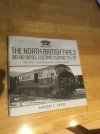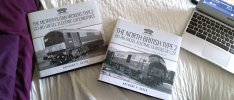Cheshire Scot
Established Member
An excellent source for details of the 'A4 era' is 'Memories of Steam from Glasgow to Aberdeen' by Michael S Walsh.It's probably the Dundee A2s I'm thinking of for Edinburgh-Aberdeen then, these never seemed to be booked for A4s unlike the Glasgow trains.
Edinburgh to Aberdeen went over from a mix of class 26 and steam to class 40 operation in December 1961.
The A4s were brought in initially for the Glasgow Aberdeen 3 hour schedules but also worked a number of other passenger services on the route, also the TPO and some freight.
Initially three A4s were allocated to Ferryhill, and two to St Rollox which soon after received 2 A3s whilst Ferryhill also received an A3 shortly after.
Ferryhill already had an allocation of A2s (as well as Dundee) which would presumably have worked the Edinburgh trains prior to the class 40s taking over - and no doubt continued to substitute from time to time, and in the following years the number and identity of the A4s in use fluctuated, with a total of 16 A4s being allocated to the route at different times over period from Spring '62 to late summer '66.
Substitutions by Black 5s, Standard 5s and V2s are noted as are the use of NBL classes 21 and 29 (sticking to the them of this tread!). Use of two Haymarket A1s and one appearance by a Doncaster A1 are also noted, so the full range of LNER pacifics performed on the route.
Last edited:



